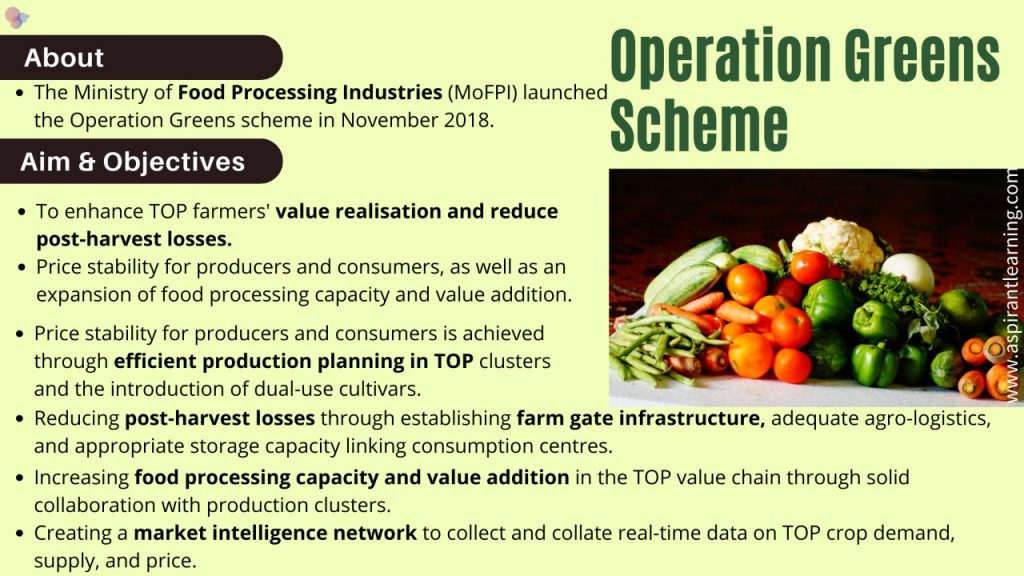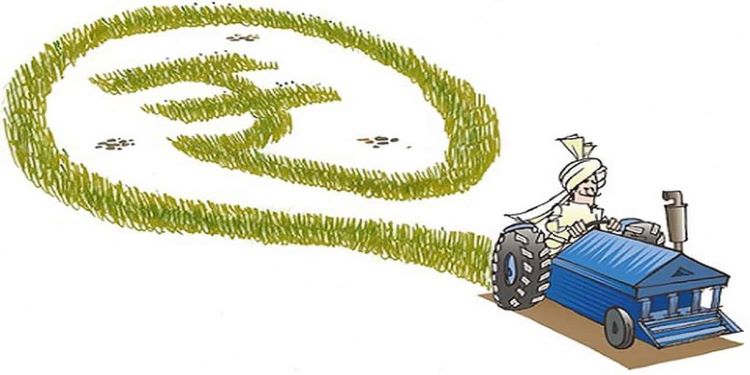News Highlight
Agriculture Infrastructure Fund crosses the Rs 30,000-cr mark of capital mobilisation for projects in the agriculture sector.
- Key Takeaway
- With a 3% interest subsidy and credit guarantee backing through CGTMSE for loans up to Rs.2 crore.
- AIF provides broad financial support to farmers, agri-entrepreneurs, and farmer groups like Farmer Producer Organisations (FPOs), Self Help Groups (SHGs), Joint Liability Groups (JLGs) etc.
- To create post-harvest management infrastructure and build community farming assets throughout the country.
Agriculture Infrastructure Fund (AIF)
- About
- It is a pan-India Central Sector Scheme that will be implemented in 2020.
- It aims to provide a medium-long-term debt financing facility for investment in viable projects for post-harvest management infrastructure.
- In addition, community farming assets through interest subvention and financial support.
- Its term has been increased to 13 years (FY2020 to FY2032).
- Intended beneficiaries
- Primary Agricultural Credit Societies (PACS)
- Marketing Cooperative Societies
- Farmer Producers Organizations (FPOs)
- Self-Help Group (SHG)
- Farmers
- Multipurpose Cooperative Societies
- Agri-entrepreneurs
- Startups
- Aggregation Infrastructure Providers
- Central/State agency or Local Body sponsored PPP Project.
Benefits of AIF
- This interest subsidy is offered for seven years.
- It offers risk-sharing and market access opportunities to farmers and value chain participants.
- Farmers can sell their produce directly if the marketing infrastructure is improved.
- Post-harvest losses can be mitigated by investing in logistical infrastructure.
- The repayment moratorium under this financing instrument may vary between a minimum of 6 months and a maximum of 2 years.
- It also includes state-specific APMC targeting and the upkeep of sanitary and phytosanitary requirements for organic food marketing and exports.
- Monitoring committees at the district, state, and national levels will shorten file processing to fewer than 60 days.
- The project aims to reduce spatial and temporal hazards in the agricultural ecosystem by providing suitable post-harvest infrastructure.
Agriculture Infrastructure Fund Objectives
- Objectives for Farmers
- Improved marketing infrastructure allows farmers to sell directly to a more significant base of consumers, increasing value realisation.
- Because of investments in logistical infrastructure, there are fewer intermediaries and fewer post-harvest losses.
- Due to this, farmers will be more self-sufficient and have better access to markets.
- Improved realisation due to contemporary packaging and cold storage system access, as farmers can sell when they choose.
- Community agricultural assets for increased productivity and input optimisation will result in significant savings.
- Objectives for Government
- Direct priority sector lending in unviable projects through interest subsidy, incentive, and credit guarantee.
- This will spur agricultural innovation and private-sector investment.
- The government will be able to lower national food waste percentages due to improvements in post-harvest infrastructure.
- It allows the agriculture sector to compete at current global levels.
- Create viable PPP initiatives to attract investment in agricultural infrastructure.
- Direct priority sector lending in unviable projects through interest subsidy, incentive, and credit guarantee.
- Objectives for Consumers
- A more significant proportion of the product will reach the market, allowing consumers to benefit from higher quality and lower pricing.

Conclusion
- The AIF is a financial tool for developing post-harvest infrastructure and communal agricultural assets.
- The Union Ministry of Agriculture has organised several conclaves and seminars to raise awareness about the AIF among various stakeholders.
Pic Courtesy: Journals of India
Content Source: PIB



